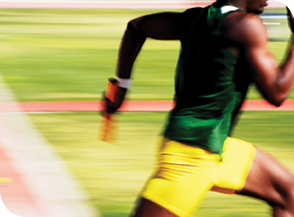Guest blog by Dr. Malachy McHugh
If the purpose of Des Spence’s article Bad Medicine: Sports Medicine (British Medical Journal, March 30 2011) is to strike a chord with sports medicine professionals then it has probably done its job. However, as a piece of scientific writing this lacks objectivity to put it mildly. The sports medicine literature is relatively clear on many of the issues raised in the article. The literature indicates that more expensive running shoes do not confer any benefit when compared to less expensive shoes. The literature is very clear that excessive consumption of water during endurance activities (especially in the slower athletes) imposes a serious risk of hyponatremia. The literature is also quite clear on the benefits of sports drinks, the types of activities for which they may be indicated and the correct timing of consumption and dosage. Of course controversies exist such as surgical vs. nonsurgical treatment of rotator cuff tears or the long term outcome of ACL reconstruction. This is the same in all areas of medicine; try to get a bypass surgeon to agree with an interventional cardiologist on the best treatment for their patients.
 As the evidence-based medicine movement has taken hold the quality of the sports medicine literature has improved. There are many more good randomized clinical trials and injury prevention studies in the literature than just 20 years ago. Sports medicine is a relatively new discipline compared to many other medical specialties and we are learning on our feet . For clinicians, there is nothing more humbling than data. Bold and confident opinions are still just opinions. For example, the statement in regard to the efficacy of massage, “it is illogical that external forces could affect a molecular physiological healing process” should maybe be reconsidered in the light of research from Tom Best’s lab (Butterfield et al 2008: Cyclic compressive loading facilitates recovery after eccentric exercise). Two lines from the abstract are quite clear on the effect of “external forces” on healing:
As the evidence-based medicine movement has taken hold the quality of the sports medicine literature has improved. There are many more good randomized clinical trials and injury prevention studies in the literature than just 20 years ago. Sports medicine is a relatively new discipline compared to many other medical specialties and we are learning on our feet . For clinicians, there is nothing more humbling than data. Bold and confident opinions are still just opinions. For example, the statement in regard to the efficacy of massage, “it is illogical that external forces could affect a molecular physiological healing process” should maybe be reconsidered in the light of research from Tom Best’s lab (Butterfield et al 2008: Cyclic compressive loading facilitates recovery after eccentric exercise). Two lines from the abstract are quite clear on the effect of “external forces” on healing:
“We found that commencing 30 min of cyclic compressive loading to the muscle, immediately after a bout of eccentric exercise, facilitated recovery of function and attenuated leukocyte infiltration. In addition, fiber necrosis and wet weight of the tissue were also reduced by compressive loading.”
I am far from being an advocate for sport massage but hard data can temper one’s opinions.
In my opinion Bad Medicine: Sports Medicine does a disservice to sports medicine and the title is inflammatory and not appropriate for a medical journal. But I suppose that is just another opinion.
Mal
Dr. Malachy McHugh is the Director of Research at the Nicholas Institute of Sports Medicine and Athletic Trauma (NISMAT) at Lenox Hill Hospital in New York City. He leads a multidisciplinary research team including orthopaedic surgeons, physical therapists, exercise physiologists, nutritionists, biomechanists, medical engineers and athletic trainers. Dr McHugh is a fellow of the American College of Sports Medicine, an associate Member of the American Orthopaedic Society for Sports Medicine, and a member of the Orthopaedic Research Society. He has more than 100 publications in the sports medicine and exercise science literature.
What are your thoughts on this subject? Please leave your comments below.